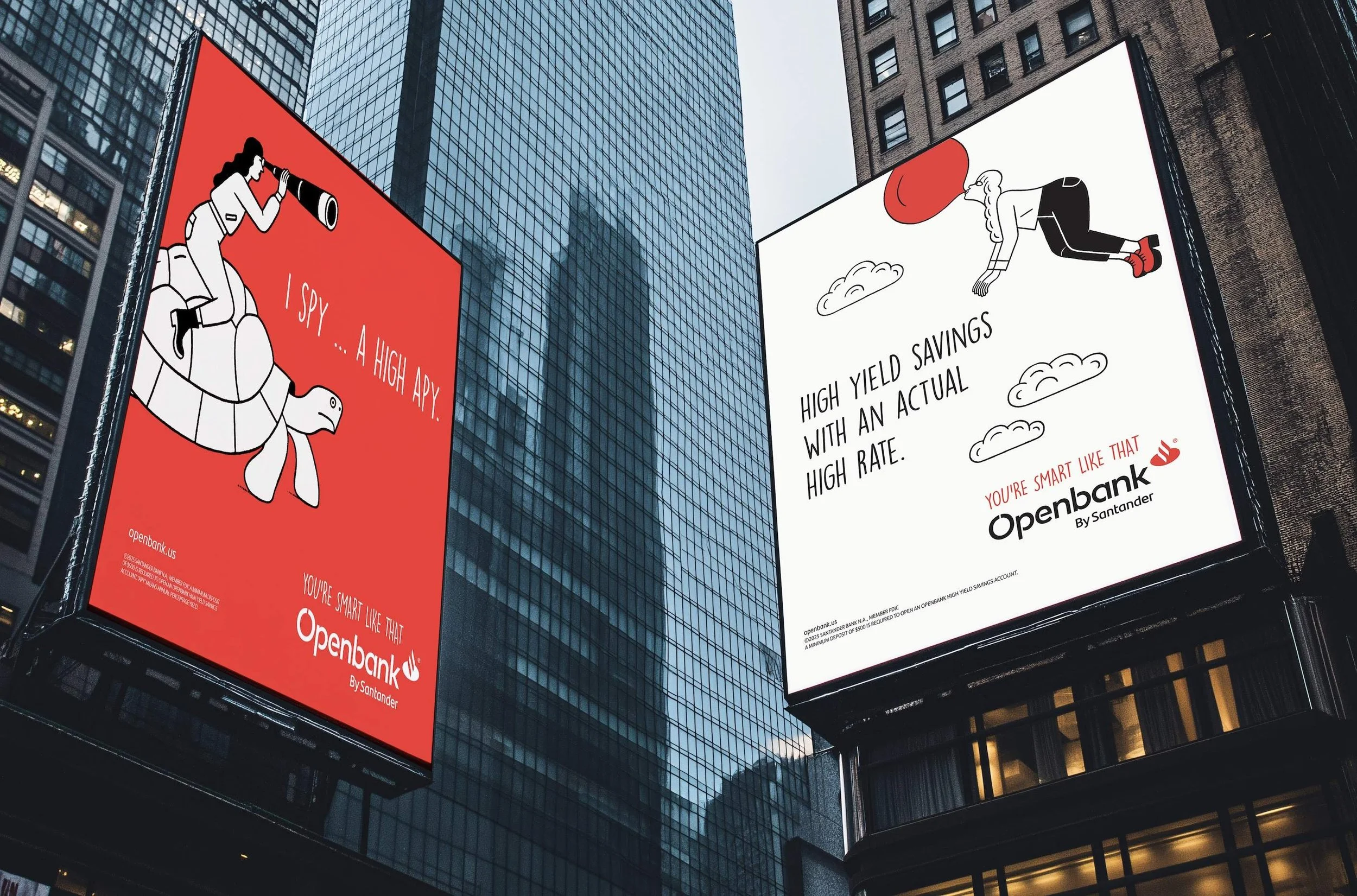Client • Santander N.A
Launching Openbank U.S From The Ground Up
I joined the U.S. launch team at Openbank, Santander Group’s flagship digital banking brand, as Product Manager within the Payments vertical. My mission was clear: shape the core money movement experience that would allow users to fund their new accounts with speed, clarity, and confidence.
Within 10 weeks of launch, we had surpassed $2B in deposits. The product didn’t just work, it earned trust at scale.
1. Context
Openbank had already proven its digital model in markets like Spain, Germany, and Argentina. But bringing that success to the United States was an entirely new challenge. The U.S. landscape is fragmented, hyper-competitive, and shaped by tech-native user expectations. There were no branches to lean on, no brand equity to rely on. Just a clean slate, a lean team, and an opportunity to launch something bold.
Santander’s leadership envisioned a fully digital bank with nationwide reach, compliant from day one and capable of onboarding users in minutes. But that vision ran into a complex web of federal and state regulations, heightened fraud concerns, and a market already saturated with sleek fintech offerings.
We weren’t adapting an existing product. We were building a digital bank from zero.
2. Problem Statement
From the earliest planning sessions, one challenge emerged again and again: how do we build a first-time experience that satisfies three competing priorities?
The business needed speed and deposits to fund Santander’s U.S. lending pipeline. Users demanded seamless onboarding, instant confirmation, and an experience on par with the likes of Cash App and SoFi.
Meanwhile, compliance and risk teams required airtight processes for KYC, AML, and fraud prevention.
The product ambition was massive. The market expectations were unforgiving. We needed to:
Build a modern, real-time payments engine
Meet compliance across 50 states
Design funding flows that were instant, secure, and familiar
Align with customer expectations shaped by SoFi, Chime, and Cash App
Operate with lean resources and aggressive timelines
The friction was clear. And yet, to succeed, we had to make it invisible.
3. Discovery & Research
To understand what trust looked like to a U.S. consumer, we immersed ourselves in the competitive landscape. We studied the user journeys of top fintech players, audited their onboarding flows, and mapped the emotional journey from signup to first transaction. We also conducted internal research, working cross-functionally with design, fraud, and compliance teams to identify pain points in legacy bank funding experiences.
What we learned was simple but profound: The first successful deposit was everything. If users could move their money without friction, they would stay.
If that moment faltered, we lost them. That insight became our compass.
4. Strategy & Prioritization
Originally, the scope included a full suite of banking products: checking, savings, cards, and more. But through the lens of discovery, it became clear that focus would deliver better outcomes than breadth.
We pivoted.
Instead of trying to be everything on day one, we narrowed the product to a high-yield savings account. This wasn’t a compromise. It was a strategic decision to build deep trust with one meaningful action: funding an account.
With that clarity, our priorities sharpened. We designed the roadmap around real-time account linking, fast and secure transfers, and a clear funding journey with smart fallback options. Every decision pointed back to a single outcome: help the user deposit money in under five minutes, and know it worked.
5. Execution
As a Product Manager in the Payments vertical, I worked closely with engineering, design, risk, and compliance to turn strategy into flow. My responsibility was to ensure that funding didn’t just function, it felt frictionless.
We built out integrations for ACH and RTP, with a seamless fallback to debit card top-up through Plaid. When users linked their accounts, we provided instant verification. When transfers needed review, we offered transparency and next steps. Every edge case, from timeout to delay, was handled with thoughtful UX.
Our team was global. Engineers in Madrid, legal in Boston, design across London. Coordination required clarity, and we kept alignment through weekly rituals, shared documentation, and a common goal: launch with zero surprises.
In those final sprints, we didn’t just ship features. We shipped confidence.
6. Results & Impact
When Openbank USA launched nationally, the results were immediate. We reached users in all 50 states. Onboarding to funding took less than five minutes on average. And within just ten weeks, deposits had already exceeded $2 billion.
The product proved the hypothesis. A tight focus on one essential user moment could outperform a bloated feature set. It validated the decision to go narrow, and it built a foundation we could scale from.
7. Learnings & Reflections
Looking back, the pivot was everything. By choosing to go deep instead of wide, we unlocked speed, clarity, and operational simplicity. It reinforced a principle I carry with me now:
The best MVPs don’t feel minimal. They feel intentional.
I also came away with a deeper appreciation for nuance. In regulated spaces, product decisions aren’t just about features, they’re about interpretation, alignment, and orchestration. Success comes from translating trust into flows, and complexity into confidence.
This project taught me that product isn’t just about what you launch. It’s about what you choose to launch, and how well it earns the right to grow.



